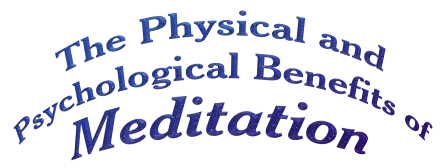|
Media
Reports
|

Excerpted by initiates
Patty McMahon and Denny Flanigan,
Ohio, USA (Originally in English)
The October 2002 Reader’s Digest article “Give Peace a Chance - Meditation for Busy, Normal people” by Carol Krucoff details some of the practical benefits of meditation. The author uses the example of Leonard Billing, a plumber for the Mount Lebanon, Pennsylvania, school system, who meditates daily, and describes his job as follows: “I’m the only one for a district with ten buildings and I work hard, ten to sixteen hours a day.” The plumber’s job is grueling, and the demands constant, yet Leonard walks placidly through his day, solving problems with a smile.
Leonard Billing wasn’t always calm, however. Virginia, Billing’s wife, says, “At 40, Leonard was a stroke waiting to happen.” He had a family history of heart disease (including a cousin who died of a heart attack at age 40), high blood pressure, and extremely high cholesterol levels. Billing was sick and miserable, and had to do something. Then he discovered that his insurance company would pay for his participation in an unconventional heart treatment program - one that included meditation.
As part of his heart therapy program, he also exercises, practices yoga and eats a mostly vegetarian diet. “Of all the changes I’ve made,” says Billing, now 52, “meditation’s what’s kept me going. It’s helped me become a much calmer person, and more confident.”
Americans are also embracing meditation for reasons that go far beyond its ability to relieve stress. Like Leonard Billing, they stumble across it when trying to manage heart disease, control migraines, lower their blood pressure, find relief from chronic pain or cope with cancer treatment. And like Leonard, long after they have resolved the problems that got them started with meditation, they continue, because the practice helps other areas of their lives as well.
How can “sitting quietly, doing nothing” have this kind of power? Meditation affects brain activity, specifically in the limbic nervous system, which controls metabolism, blood pressure, respiration and heart rate. Harvard Medical School psychologist Alice Domar has witnessed such changes firsthand. As part of her doctoral dissertation research, Domar spent a year in an operating room teaching a simple two-minute breathing meditation technique to patients who were about to undergo surgery. “The patients reported less anxiety and coped better with the surgery,” she says. “Doctors liked it because patients’ blood pressure was lower, they bled less and surgery took less time.”
Corporate America is also beginning to capitalize on the benefits of meditation. Many employees are required to do complex multitasking, which leads to anxiety and makes it difficult for them to think clearly. Learning meditation helps them to focus their attention and be more productive.
Meditation’s true power comes not just from the time spent in formal practice, but also from taking the lessons of meditation - learning to be relaxed and aware - out into the rest of the day.
